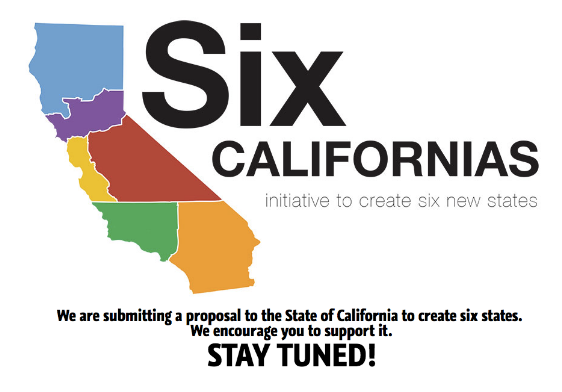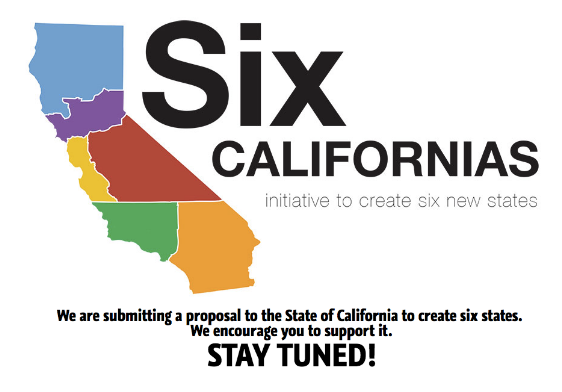California is riddled with faults.
There are 15,700 known faults under the land mass we call the State of California.
Of those, 500 plus are considered active faults.
There are often more than 100 earthquakes a day.
The California Earthquake Authority indicated they are essentially so small that hardly anyone feels them. But every once in a while many of us will get a jolt.
There is another little fun fact about California gleaned from the ultimate source of all things California, the state library.
California, which obtained statehood in 1850, has seen at least 220 attempts to break up the state.
Those 220 attempts are chronicled in the state library collection with timelines historic maps and documents, books and articles on the topic as well as videos on more recent efforts.
Just like with quakes, most are too small for you to sense the rumblings.
A few — such as the State of Jefferson movement — are more well-known and persistent complete with bumper stickers and signs erected through various parts of Northern California.
There are occasional 5.0 events that almost make their way to the statewide ballot. The last temblor was the so called “Six California’s” Initiative pushed by venture capitalist Tom Draper in 2016.
It might surprise you to know the break up movement is alive but barely registering on the Richter scale of politics in our own backyard.
It’s called the “New California State” movement and it’s been around since 2017.
Leaders of the movement declared their “independence” on Jan. 15, 2018 and are planning their 10th constitutional convention Jan. 12-14, 2023.
Unlike the Bar Flag Rebellion folks of June-July 1846. their bid for liberty isn’t taking place in the homes of those that are disgruntled nor have they taken over a government outpost and hoisted their flag.
Instead, they’re conducting a full-scale convention in Anaheim complete with online ticket sales. The preferred ticket package, by the way is $275. Its clearly small price to pay to save one from California as it is today.
The grievances are many and predictable. General frustrations are centered around education, crime, taxes, and general governance.
They have committees in almost every county. One of the exceptions, of course, is San Francisco.
The website is fairly elaborate and has various governing documents that have been adopted. In a way it’s kind of like the American Legion California Boys State & Girls State programs but for adults and more staying power than just one week a year. Both are essentially a “mock” state government with no real power.
Unlike the high school juniors that attend that summer program, the goal isn’t to become the future leaders of California but to create a new State of California.
Last month, about a dozen members of the movements chronicled their efforts during public comments at the Modesto City Council, meeting.
With that in mind, splitting up California could be a messy business.
Draper’s proposed 2016 hatchet job that collected more than 1.3 signatures but didn’t qualify for the ballot is a prime example.
Draper contended with 39 million people California is ungovernable. He believed the Silicon Valley — which would be the name of a new state that would include San Jose, San Francisco, and Oakland among other locales —was being held back by what he saw as California's ongoing political mess.
California, though, is the sum total of its vast differences and resources and that one end of the state couldn't prosper without the other. It would be like Ginger Rogers without Fred Astaire.
Draper claimed every new California state would prosper. Conveniently his home state of Silicon Valley would have had the highest per capita of all states in the union while the State of Central California next door that stretched from Stockton to Bakersfield and east to the Nevada state line would have the nation's lowest.
Debt would be distributed based on population. And if agreement couldn’t be reached on splitting assets — the State Water Project, prisons, universities and colleges and such — each state would get State of California facilities within their jurisdiction.
The State of Jefferson in the far north would control the State Water Project's largest reservoir. Central California would control the California Aqueduct and much of the Delta. Removal of water from the Hetch Hetchy watershed by San Francisco and Owens Valley watershed by Los Angeles would be subject to new regulations developed by the State of Central California.
As a state, Central California would have a very significant seat at the table when it came to the Delta Tunnel given the largest share of the Delta is within its boundaries. That could prove problematic for Los Angeles and the new State of West California as well as the State of Silicon Valley since the tunnel project benefits both at the Delta’s expense.
The number of convicted felons housed in Central California would drop drastically unless of course, other “new” states paid to warehouse them here. West California, as an example, has 37 percent of California’s convicted felons and less than 7 percent of its prison bed space. As an added bonus Central California would have the $900 million state prison hospital. By opting not to import prisoners from four of the other five new states (the State of Jefferson wouldn't need to send any out-of-state with 970,000 residents and possessing the Pelican Bay and Susanville state prisons), Central California could meet the federal court prison overcrowding and healthcare mandates. That means we could incarcerate more criminals while the states of Silicon Valley and West California would have to let even more convicted felons loose long before their sentences have been served.
All of this and more is possible with a California breakup.
But let's be honest. Draper's idea that naively was built on the hope of starting from scratch to create state governments to reflect the dynamics of six distinct regions in California should have been named, "The Lawyer Lifetime Employment Act."
There is no way that anyone is going to take a per capita share of the debt and then let assets go to new states based on where they are physically located.
As much as folks in the State of Jefferson like to whine, the state has a lot of road debt for freeways and highways that they can't begin to cover.
You'd be creating six states with at least two, if not three, having a major retraction in state-level education funding. Uncle Sam will not like that.
Draper was not the first person to conclude that California is too big to govern nor will he be the last.
But when all of the emotion is set aside California is the sum of its resources, diversity, and challenges. Six will not stand as strong as one, warts and all.
Whether we live in Redding, Los Angeles, San Francisco, Lake Tahoe, Manteca, Bakersfield, Delano, San Diego, Needles, Lone Pine, or the Silicon Valley, we are all Californians.
Our problems and interwoven with our successes.
This column is the opinion of editor, Dennis Wyatt, and does not necessarily represent the opinions of The Bulletin or 209 Multimedia. He can be reached at dwyatt@mantecabulletin.com





